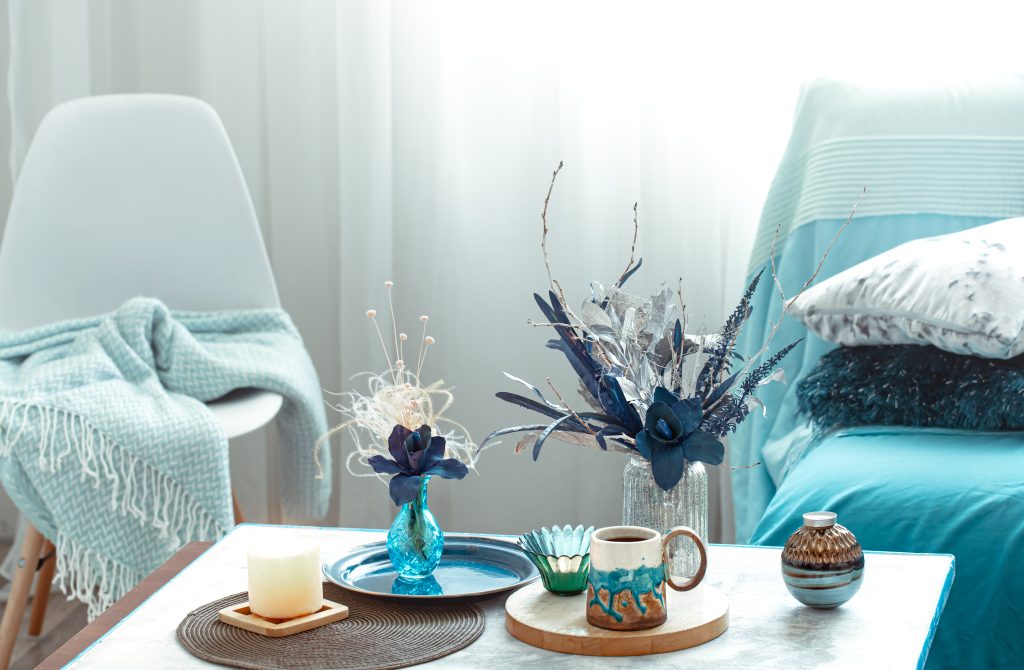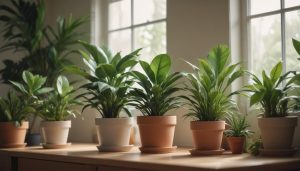Home Decor Trends That Inspire Comfort
Jessica White August 19, 2025
In 2025, comfort is no longer just a secondary element in design—it’s the guiding principle shaping how we live at home. People want spaces that feel warm, nurturing, and authentic, a shift that reflects broader lifestyle changes. With remote work, wellness-driven routines, and a greater emphasis on self-care, homes are expected to deliver not only function but also a sense of peace.
The phrase “Home Comfort Trends 2025” captures this evolution. Unlike past years that prioritized stark minimalism or futuristic aesthetics, the emphasis now is on softness, layers, and design choices that support well-being. These trends are not about temporary decor fads but rather about building long-lasting, meaningful spaces.

Why Home Comfort Trends 2025 Matter
- Well-being first: Homes are evolving into sanctuaries that promote mental and emotional balance.
- Shift from minimalism: The clean but cold look of ultra-modern minimalism is being replaced by warmth and tactility.
- Human-centered design: Comfort-driven choices align with how people actually live—multi-use spaces, cozy nooks, and wellness features.
This article explores the most important comfort-inspired home design trends for 2025. Each section provides practical guidance, making it easy to adapt these ideas for your own space.
1. Soft-to-Touch Textures: Sensory Comfort
Textures play a major role in how comfortable a space feels. In 2025, tactile fabrics like velvet, bouclé, chenille, and thick weaves are being used to create coziness on both a physical and emotional level.
The emphasis is on surfaces you want to touch—plush upholstery, layered bedding, and textured wall treatments. Designers also suggest mixing materials for added depth: pairing a boucle sofa with a chunky knit throw, or layering a silk pillow against a linen backdrop.
How to integrate this trend:
- Update your sofa with a bouclé or faux-shearling throw.
- Choose accent chairs upholstered in velvet for a luxurious touch.
- Add a shaggy rug in the bedroom to create warmth underfoot.
- Mix textures—linen curtains against velvet cushions—for balance.
This tactile approach enhances relaxation and brings a multisensory dimension to living spaces.
2. Warm, Earthy Tones: Natural Comfort Palettes
Color is central to how we perceive comfort. For years, gray dominated interiors, but 2025 marks a clear departure. Warm browns, deep ochres, terracottas, and earthy greens are now the stars. These tones, often inspired by natural landscapes, provide grounding energy.
Color psychology plays a role here. Browns and earth-inspired tones are associated with stability, calmness, and reassurance. As life becomes increasingly digital, these palettes reconnect people to the organic world.
Easy ways to adopt warm colors:
- Paint an accent wall in clay, mocha, or olive.
- Replace throw pillows in cool neutrals with warm ochres.
- Use ceramics, clay pots, and natural wood finishes for small accents.
- Layer bedding in shades of caramel, taupe, and off-white.
These palettes are versatile, pairing well with both traditional and modern interiors. They soften hard edges and create a cozy, welcoming vibe.
3. Curved Furniture and Romantic Silhouettes: Embracing Softness
Sharp lines are giving way to organic, rounded forms. Crescent-shaped sofas, arched mirrors, oval dining tables, and curvilinear lighting fixtures are in high demand. This reflects a growing interest in design that feels approachable and fluid rather than rigid.
Curves also enhance the flow of a space, making it feel less boxy and more human-centered. Romantic silhouettes—such as billowing drapes, sculptural armchairs, and soft arches—add an emotional dimension to interiors.
Tips for introducing curves:
- Invest in a circular or oval dining table to soften a formal dining space.
- Use arched mirrors to create the illusion of height and softness.
- Replace a square ottoman with a round one for versatility and flow.
- Choose lighting fixtures with spherical or curved elements.
The goal is to create interiors that feel less structured and more fluid, mirroring the natural shapes we see in the environment.
4. Biophilic Design & Pockets of Sanctuary: Nature Meets Comfort
Biophilic design—the practice of integrating natural elements into interiors—has grown steadily, and in 2025 it takes on a new dimension. Beyond simply adding plants, this approach now includes maximizing natural light, incorporating natural materials like stone and wood, and designing intentional “sanctuary” spaces.
These “pockets of sanctuary” are small zones within the home dedicated to quiet and renewal. They might be a reading nook by the window, a meditation corner, or a cozy alcove for tea and reflection.
How to create yours:
- Add houseplants with varying textures, from leafy ferns to sculptural succulents.
- Dedicate a small corner to a reading chair, layered with soft lighting.
- Use natural textures like jute, rattan, or reclaimed wood for furniture.
- Bring in calming artwork inspired by landscapes or botanical prints.
This trend reflects the growing importance of wellness, encouraging homes to function as restorative environments rather than just living quarters.
5. Statement Lighting & Textured Surfaces
Lighting does more than brighten a room—it shapes mood. In 2025, layered lighting is essential. Designers recommend a combination of task lighting (lamps), ambient lighting (overhead fixtures), and accent lighting (sconces or LED strips).
Statement lighting—such as sculptural chandeliers or bold pendant lights—has become a focal point in interiors. These fixtures serve as both functional and artistic elements, elevating comfort by giving spaces a softer glow.
Textured surfaces are also having a moment. Wall paneling, plaster finishes, and textured wallpapers add depth and dimension, replacing the flat, sterile walls that dominated modern interiors for years.
Practical suggestions:
- Add a dimmable table lamp to create evening ambiance.
- Use wall sconces in bedrooms instead of harsh ceiling lights.
- Apply plaster or limewash to walls for subtle depth.
- Introduce a sculptural chandelier as a living room centerpiece.
Together, lighting and texture create an environment that feels layered, intimate, and soothing.
6. Wellness-Driven Home Design: Emotional Architecture
A growing trend in architecture and interior design is the focus on wellness. Known as “emotional architecture,” this approach incorporates elements that enhance both physical and mental well-being.
In practical terms, this can include:
- Circadian lighting systems that adjust throughout the day to support natural rhythms.
- Soundscaping features, such as calming ambient sound systems.
- Scent diffusion, using essential oils or natural diffusers to improve atmosphere.
- Clean-air technology, with improved ventilation and air-purifying plants.
Wellness-driven design reflects the idea that homes should not only look good but actively contribute to health and happiness.
Accessible ways to bring wellness home:
- Use smart bulbs that shift from bright white to warm tones.
- Introduce Himalayan salt lamps for a calming glow.
- Add lavender or eucalyptus diffusers in living spaces.
- Place air-purifying plants like peace lilies or snake plants in key rooms.
This holistic approach ensures that comfort is more than surface-level—it becomes part of the lived experience of the home.
7. Nostalgia and Personalized Elements
Comfort often ties to memory. Nostalgic elements—such as display cabinets, vintage textiles, or antique-inspired patterns—are resurging. Unlike mass-produced decor, these elements carry stories, helping people feel emotionally connected to their environment.
Personalization is also key. Rather than copying catalog-perfect interiors, homeowners are mixing old and new, showcasing heirlooms, and layering patterns that reflect their identities.
Ways to personalize your space:
- Curate a display cabinet with meaningful books, heirlooms, or art.
- Mix modern sofas with antique side tables.
- Add nostalgic details like patterned quilts or crocheted throws.
- Incorporate family photographs in stylish frames.
This trend reinforces the idea that comfort isn’t only about aesthetics—it’s about emotional resonance.
Extended Insights: The Psychology of Comfort in Design
Interior designers often emphasize that comfort is as much about psychology as it is about aesthetics. Certain design elements trigger calming responses:
- Soft lighting lowers stress levels.
- Natural textures create grounding effects.
- Warm tones stimulate feelings of safety.
- Curved shapes mimic organic forms, making rooms feel more inviting.
By understanding these psychological influences, homeowners can design spaces that actively support relaxation and mental health.
Summary: Why Home Comfort Trends 2025 Matter
| Trend | What It Brings to Comfort |
|---|---|
| Soft Textures | Adds tactile and emotional warmth |
| Warm Earthy Tones | Grounds spaces with natural visual calm |
| Curved Furniture | Creates approachable, fluid spaces |
| Biophilic & Sanctuary Zones | Merges nature and nurture for well-being |
| Statement Lighting & Texture | Shapes mood and adds layered depth |
| Wellness Design | Supports holistic health and sensory balance |
| Nostalgia & Personalization | Adds meaning and emotional connection |
Home Comfort Trends 2025 in Action: Quick Checklist
- Add velvet or bouclé cushions for tactile comfort.
- Paint or accessorize with earthy shades like mocha, terracotta, or olive.
- Introduce rounded furniture or arched mirrors.
- Create a plant-filled nook or a meditation corner.
- Layer lighting with sculptural fixtures and sconces.
- Use wellness-driven features like circadian bulbs or diffusers.
- Showcase heirlooms or nostalgic items to personalize your home.
References
- Artsy. (2025). Interior design trends shaping 2025. Available at: https://www.artsy.net (Accessed: 19 August 2025).
- House Beautiful. (2025). Stylish interior design trends for 2025. Available at: https://www.housebeautiful.com (Accessed: 19 August 2025).
- Veranda. (2025). Color trends designers love in 2025–2026. Available at: https://www.veranda.com (Accessed: 19 August 2025).







